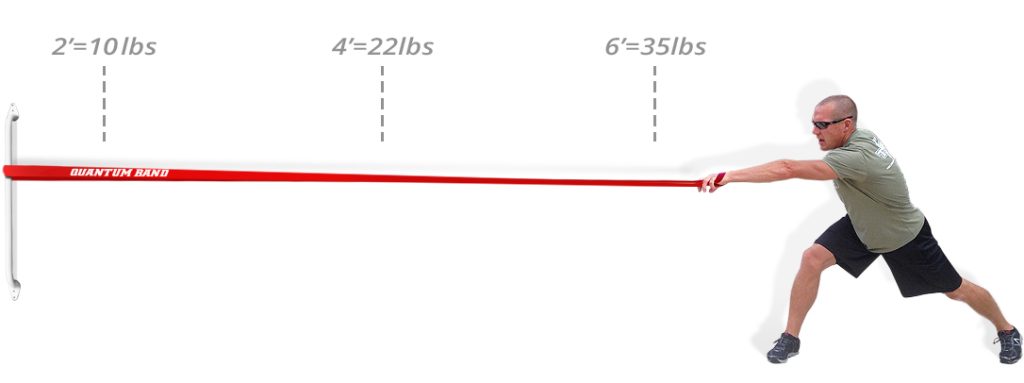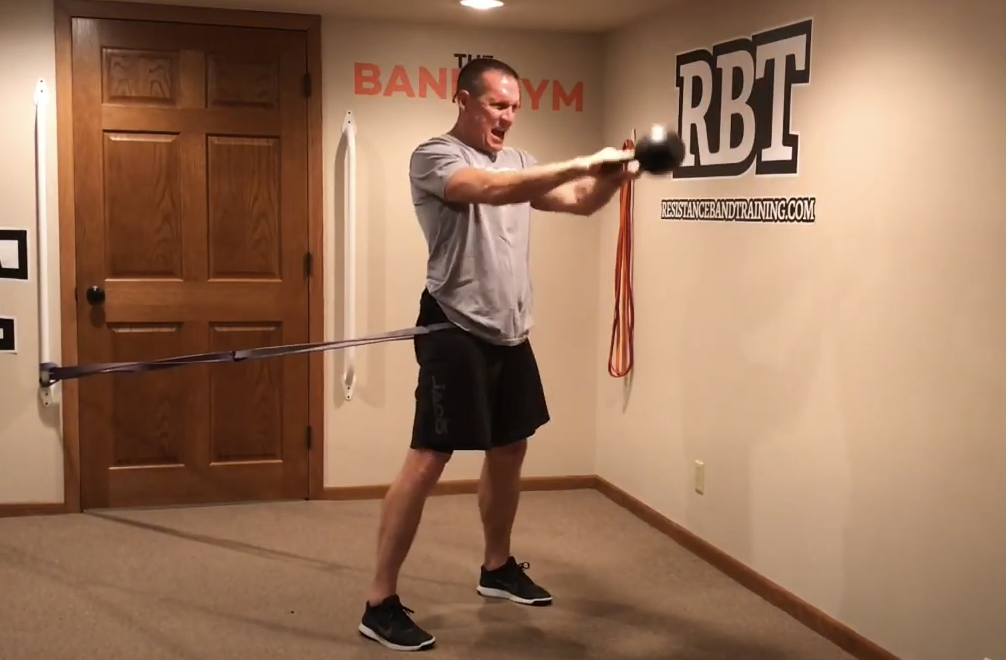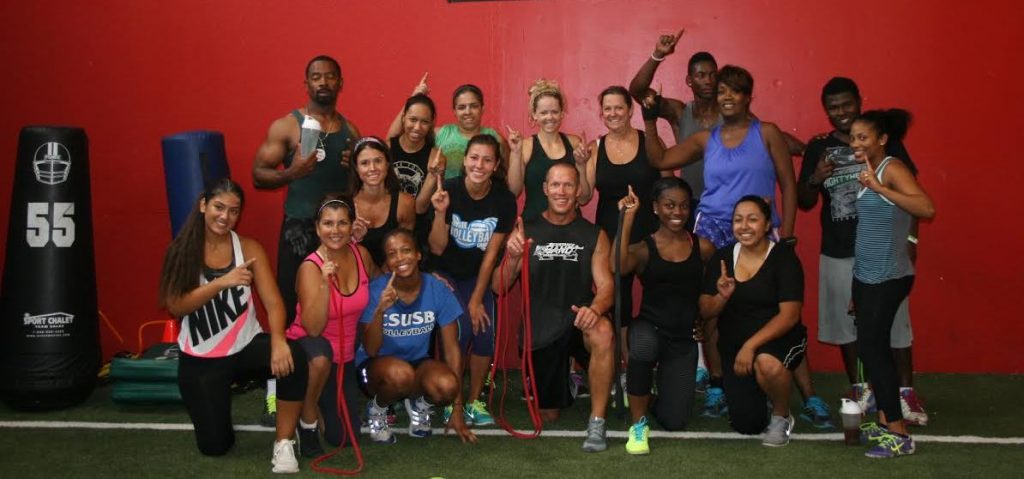A Band’s High Level of Resistance Variability Can Make it Challenging to Determine When to Change to the Next Level of Band Resistance
There are a few key band training characteristics that will make it easier for anyone to determine when they need to chose a higher level of Band Resistance
How far is a Quantum Band being stretched?
Every 41” Quantum Band can be stretched 2 yards or 6 feet. However if you are routinely stretching a 41″ band 6 feet or more, you should move up to the next level of band resistance. Remember that you have 6 feet to train with so by moving up to the next level band it creates less stretch pressure on the band while still allowing you to create the same or more band resistance.

What exercise is being performed?
Certain exercises will require greater levels of band resistance. For example, an attached squat row is going to require a higher level of resistance as compared to an attached bicep curl. Even though this seems to be an easy decision, this often is not what occurs when training with resistance bands. Instead our of convenience, individuals will attempt to achieve optimal resistance with a smaller band by overstretching it. As a a result the smaller band is torn.
The #1 Reason a band is damaged during training is due to overstretching to achieve a greater resistance challenge.
What is the level of fatigue or reps being performed?
It is difficult to quantify band resistance based on poundage but you can quantify work effort. When choosing the correct band, perceived level of exertion (PLE) plays a significant role in determining the optimal level of band resistance. This requires a subjective evaluation by the training person during the exercise. Key factors to monitor PLE is the ability to perform full range of motion in at least 90% of the desired reps per set. The other key to factor is making sure there is always some level of tension on the band system during any exercise. If these 2 factors are being met during an exercise, mostly the band resistance being used is optimal.
Are you matching your goals?
Similar to training with weights, it is important to know what your training goals are when choosing your band resistance. Again most people don’t approach band strength training with that mindset. However a band is no different than a free weight when it comes to achieve different strength training goals. If the goal is to increase strength, band resistance must at moderate to high level which means band starting tension will be at a moderate level so the finishing resistance is a high level.
Yes, You Can Go Heavy with RBT
To Achieve Optimal Band Strength Training Results it will Require Having 3 to 4 Levels of Band Resistance
The Following Chart Will help You Determine your Optimal Band Resistance



